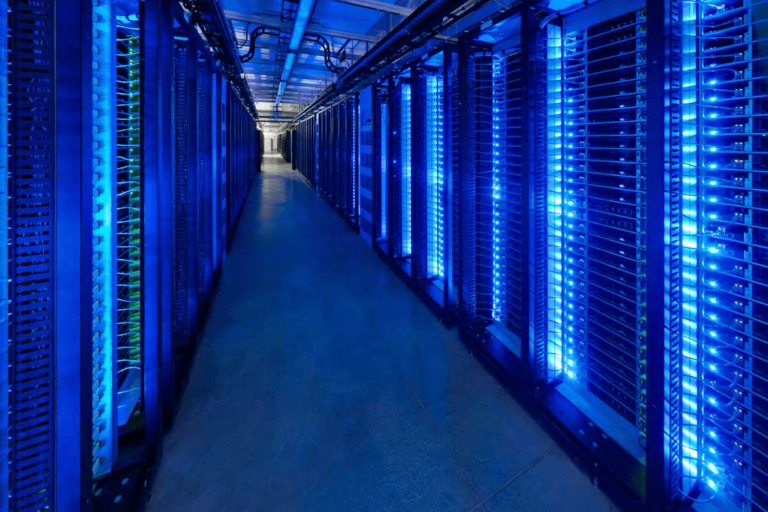Optimizing Data Center Infrastructure Management for Efficiency and Reliability
Introduction to Data Center Infrastructure Management
Data Center Infrastructure Management (DCIM) is a comprehensive approach to managing a data center’s resources and capacity to achieve maximum efficiency. Effective data center management software can streamline operations and significantly enhance data centers’ performance and reliability. In an era where data centers are at the forefront of digital transformations, effective DCIM is crucial for maintaining performance and stability.
The strategic implementation of DCIM not only aids in optimizing the physical infrastructure but also ensures that resources are deployed judiciously, adhering to energy-saving protocols and minimizing operational costs. This holistic approach boosts the overall efficiency of data centers, which are critical to the seamless functioning of businesses across various industries worldwide.
Critical Components of Effective DCIM
Effective DCIM consists of several core elements that work synergistically to maintain the health and efficiency of a data center:
- Environmental Monitoring: Keeping tabs on cooling, humidity, and power usage is essential. Constant monitoring helps maintain optimal conditions necessary for the proper functioning of data center equipment.
- Asset Management: Tracking all hardware and software assets within the data center ensures that every component is accounted for and functioning as intended. It includes everything from servers to networking equipment and peripherals.
- Capacity Planning: Anticipating demand to avoid over or underutilization of resources helps plan and scale infrastructure efficiently. It prevents scenarios where resources are either strained or wasted.
- Energy Management: Implementing strategies to minimize energy consumption and costs while maximizing efficiency is critical. It includes deploying energy-efficient hardware and optimizing cooling strategies.
- Security and Compliance: Ensuring the data center meets all regulatory and security standards to protect sensitive information is paramount. It includes physical security measures, cybersecurity protocols, and adherence to industry standards.
Best Practices for DCIM Implementation
Implementing an effective DCIM strategy involves adhering to best practices, which often determine the level of success you will achieve:
- Evaluate the existing infrastructure comprehensively and pinpoint any shortcomings. Understanding the existing setup helps tailor the DCIM strategy to address specific needs and challenges.
- Leverage industry-proven tools and software for continuous monitoring and management. Utilizing advanced tools ensures comprehensive oversight and facilitates prompt intervention when issues arise.
- Foster collaboration between network, facilities, and IT teams. Effective communication and collaboration help align goals and ensure seamless integration of DCIM practices.
- Prioritize scalability to accommodate future growth and technology changes. The chosen solutions should be flexible enough to evolve with the organization’s needs and technological advancements.
- Allocate resources for training and development to guarantee that employees are skilled in utilizing new DCIM tools and practices. Regular training helps in keeping the team updated and capable of effectively utilizing the DCIM solutions.
The Role of Automation in DCIM
Automation plays an increasingly critical role in DCIM, simplifying procedures and decreasing the chances of human mistakes. Automated systems can efficiently collect and analyze data to optimize resource allocation, leading to improved utilization and energy savings essential for sustainable operations.
Additionally, automation allows for real-time adjustments and predictive maintenance, which reduces downtime and extends the lifespan of data center equipment. Integrating artificial intelligence with DCIM can enhance operational efficiency by predicting and mitigating potential issues before they escalate, saving time and resources.
Case Study: Successful DCIM Deployment
Consider the case of a global retail giant that successfully implemented a DCIM strategy to streamline its data center operations. By adopting best practices and leveraging advanced DCIM tools, the company reduced energy consumption by 25%, improved server utilization rates, and enhanced overall system reliability.
This successful deployment underscores the importance of a well-planned DCIM strategy in achieving operational excellence and sustainability in data center management. The approach cut costs significantly and prepared the organization to integrate future technological advancements seamlessly.
Common Challenges and Solutions in DCIM
Despite the many benefits, implementing DCIM can come with its own set of challenges. These may include high initial costs, integration complexity, and staff resistance to change. However, these challenges are surmountable with targeted solutions:
- Investing in modular DCIM solutions to manage costs effectively. Modular solutions allow phased implementation, spreading costs over time and reducing the financial burden.
- Developing a phased implementation plan to simplify integration. A step-by-step approach helps manage complexity and ensures that the integration does not disrupt ongoing operations.
- Conducting regular training and communication sessions to reduce resistance and ensure smooth adoption. Keeping staff informed and involved in the transition process fosters a culture of acceptance and cooperation.
Future Trends in Data Center Management
The future of DCIM is poised for exciting advancements. Recent developments like edge computing, the incorporation of AI and machine learning, and the shift towards eco-friendly and sustainable data center designs are transforming the sector. As these technologies become more mainstream, data centers will become more efficient, resilient, and responsive to the ever-growing demands of the digital age.
To stay ahead in the data-driven industry, organizations must keep abreast of these trends and integrate them into their existing DCIM strategies. Staying ahead of the curve will enhance operational efficiency and ensure that data centers are prepared to meet future challenges head-on.
Looking for more? You’re in the right place! Make sure to bookmark our page and come back to check out more interesting articles.







